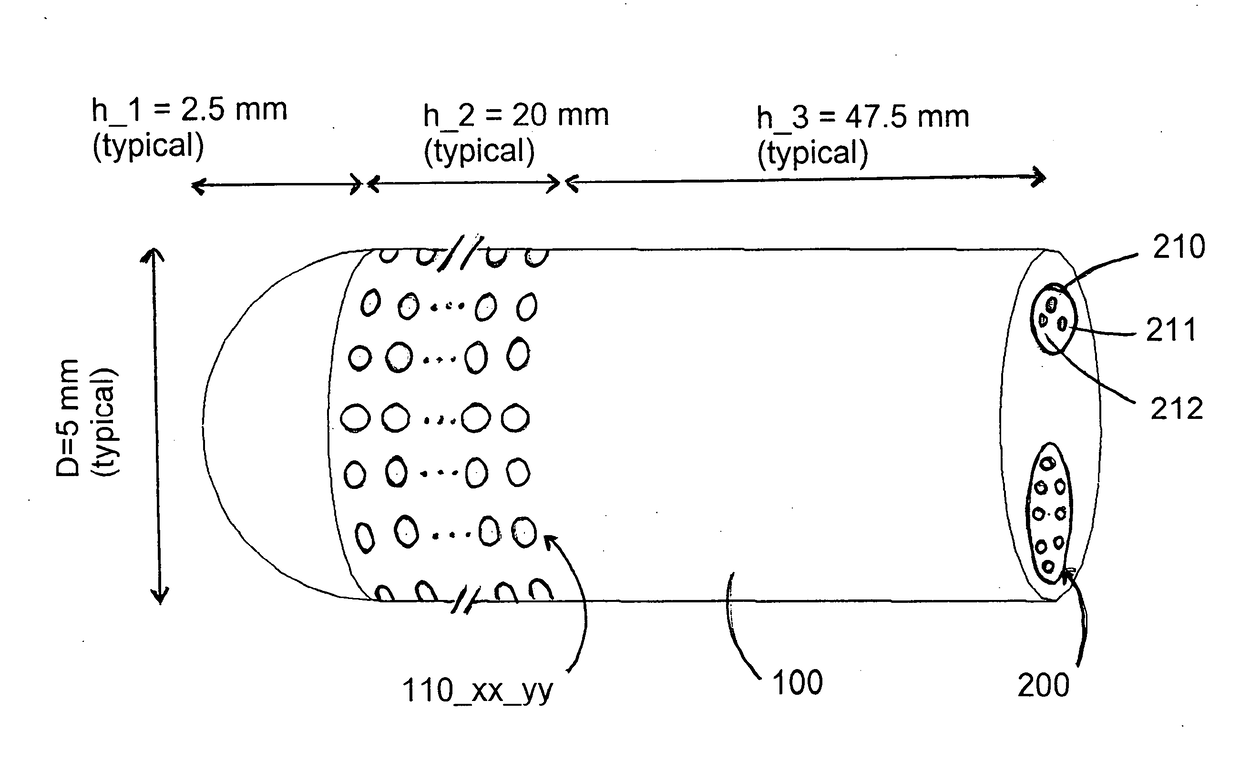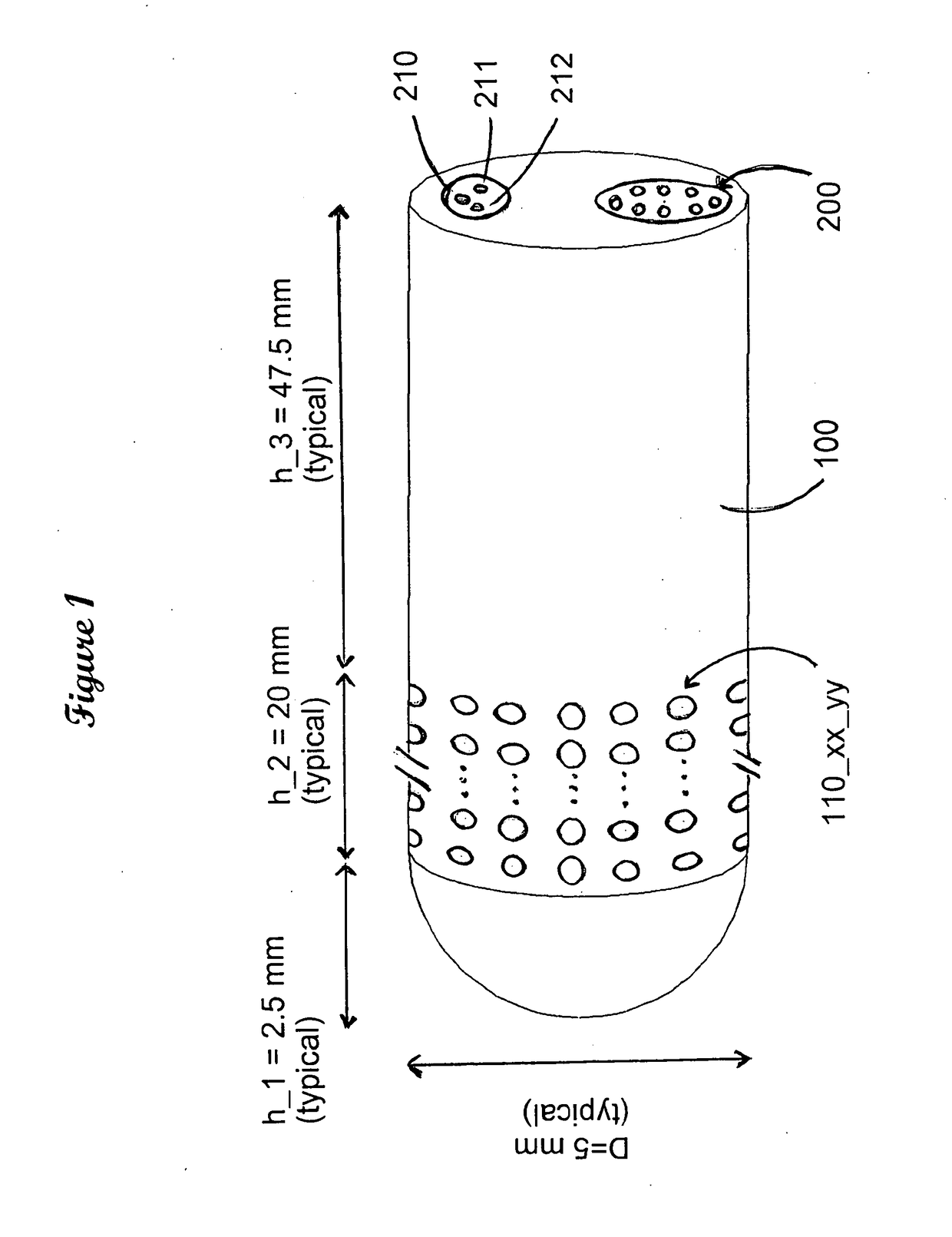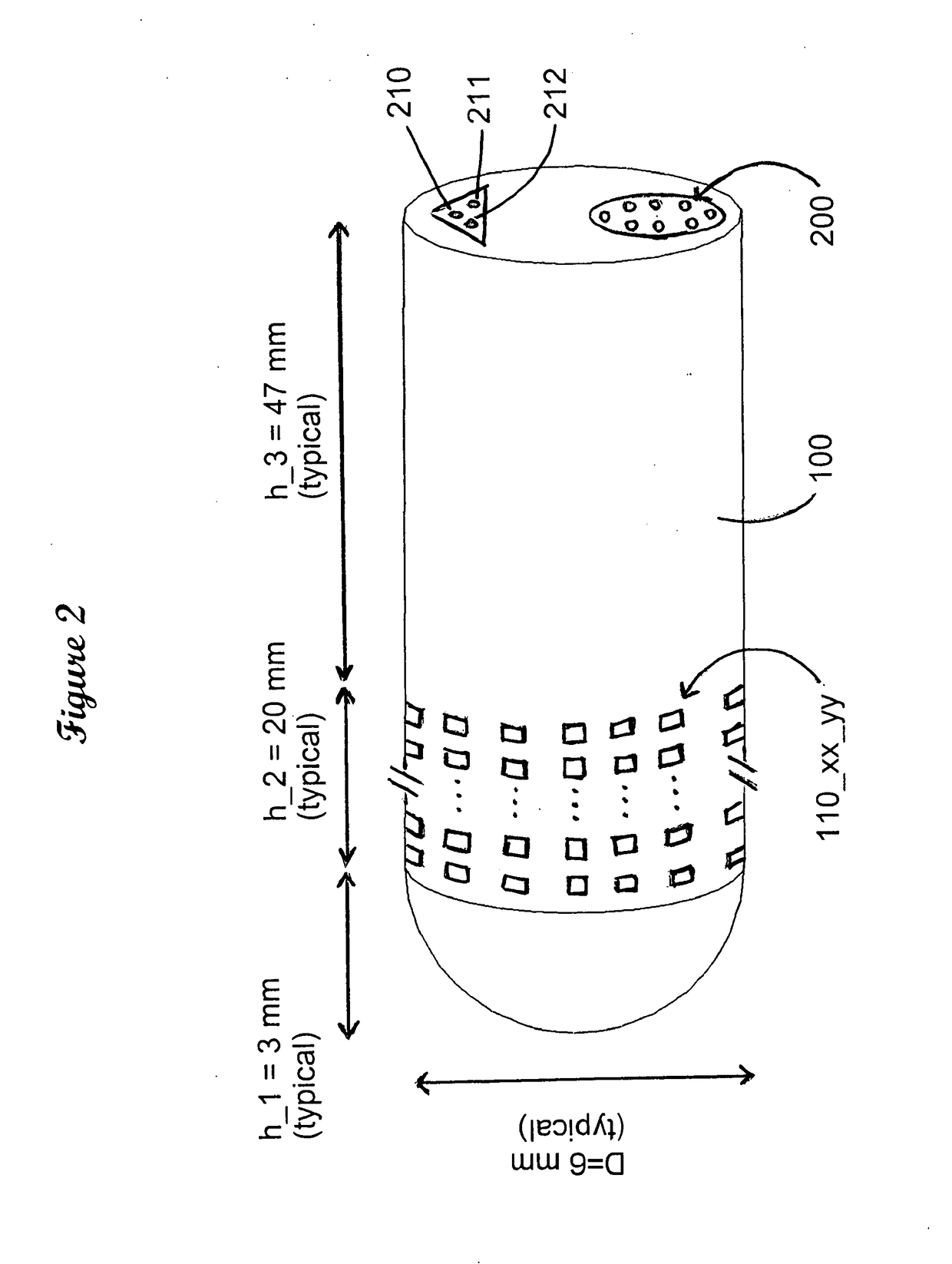Multiple electrodes and connecting wires for neural and muscular stimulation and measurement device
a neural and muscular stimulation and measurement device technology, applied in the field of cellular electrical measurements, can solve the problems of not revealing a system capable of combining the measuring tips, the electrodes are less than 100 micrometers, and the trauma on the animal is increased, and the effect of less accura
- Summary
- Abstract
- Description
- Claims
- Application Information
AI Technical Summary
Benefits of technology
Problems solved by technology
Method used
Image
Examples
second embodiment
[0092 of Our Invention. Description of the Invention.
[0093]Description of Second Embodiment—Short, Electrical Engineering Version.
[0094]A second embodiment discloses the use of multiple signal wires to carry the signal from the picafina surface to an external measuring instrumentation (e.g., a voltmeter) and a separate second digital addressing system to select which of said wires is connected to the selected measuring tips. The electrical connections for this second embodiment are shown in FIG. 8a and FIG. 8b. Said second digital addressing system is separate from the first digital addressing system only logically, as each is a set of wires running in parallel. Each of the available wires to carry the signal can be connected to any of the available measuring tips, allowing several simultaneous measurements from different measuring tips, as many as there are signal wires. In this embodiment, at the same time that a measuring tip is selected, the output of its address decoder 830 bes...
PUM
 Login to View More
Login to View More Abstract
Description
Claims
Application Information
 Login to View More
Login to View More - R&D
- Intellectual Property
- Life Sciences
- Materials
- Tech Scout
- Unparalleled Data Quality
- Higher Quality Content
- 60% Fewer Hallucinations
Browse by: Latest US Patents, China's latest patents, Technical Efficacy Thesaurus, Application Domain, Technology Topic, Popular Technical Reports.
© 2025 PatSnap. All rights reserved.Legal|Privacy policy|Modern Slavery Act Transparency Statement|Sitemap|About US| Contact US: help@patsnap.com



